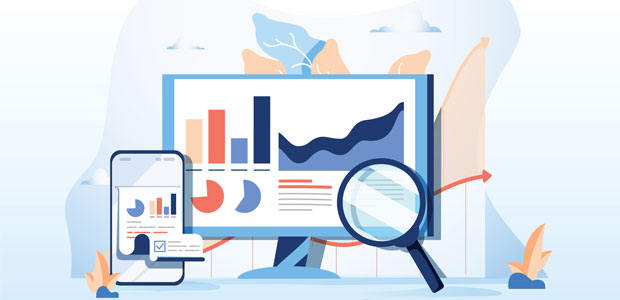
Advanced reporting - the unsung hero of a modern data-driven contact centre
With research showing that up to 96% of customers would consider switching from a business after a single bad service experience, there can be no doubt that service is a key differentiator for today’s customers. Contact centres have always been challenged by employee productivity and surges in demand, but never more so than now as remote working has brought new and more complex management issues.
Businesses must equip themselves with the tools and insights to flag problems and ensure service levels are uninterrupted where possible. Anne-Meine Gramsma, CCO, ContactCenter4ALL, argues that detailed contact centre reporting is key to identifying and tackling issues at source before they impact service levels and brand reputation.
The days of ‘traditional’ contact centre reporting, which might consist of simply examining a printout at the end of each week with basic metrics such as overall solve rate, are long gone. Modern contact centre success for today’s highly responsive, demanding customers relies on being able to identify potential issues and tackle them in real time.
The future of customer service is data-driven
This evolution into real time reporting integrated with historic data is a core component of transforming the legacy contact centre into a lean, agile operation - one capable of rapidly identifying and handling surges in call volumes, whether seasonal or at peak times during the day.
Both real time and historic reporting are equally vital to sustained contact centre success. These help identify and address developing situations, but also tackle long-term, recurring operational challenges. To reach this level, organisations must be able to track metrics such as agent availability, wait times, call length and more through a single dashboard - or ‘single source of truth’.
A deep-dive into performance is essential in any contact centre
Granular data has rapidly shifted from being simply ‘nice to have’ to the lifeblood of any organisation. Today’s contact centre successes and failures are defined by KPIs and metrics measuring the extent of customer service performance and positive customer outcomes.
There are many ‘advanced’ software solutions available in the market that support customer service operations - but if they cannot provide insights into performance levels, management will struggle to use these solutions in the most effective way to ensure positive outcomes in a timely manner.
Integrated reporting features are even more critical today with the ongoing shift to remote working. It is a challenge for supervisors and management to keep tracked of scattered agents - remotely tracking performance levels and customer satisfaction is a necessity to identify and address operational challenges and ‘teething problems’ caused by the new remote environment.
Unlocking the full value of contact centre data
All possible data must be captured in real time from every channel operated by the contact centre - whether this is live chat, emails, phone calls or social media. Gathering this data is a critical task, but if organisations do not use the data to gain any detailed insights from it, it is ultimately of little value.
Indeed, many businesses either struggle to capture and aggregate data, or fail to extract full insights and business insights from their datasets. Organisations that want to successfully transition to data-driven contact centre operations must be able to visualise, manipulate and extract data in real time.
Enter granular reporting
Any effective, future-proof contact centre solution will have the ability to process and deliver both historical and real time performance reports. These built-in features can then be further enhanced with powerful Business Intelligence and visualisation tools such as Microsoft Power BI, designed to seamlessly integrate with contact centre software. These solutions provide extra benefits such as reporting notifications and alerts shared directly through the software or via email.
Truly effective contact centre reporting will focus on accessibility, providing granular reporting dashboards that can be operated by supervisors and managers of all skill levels. Sifting through and visualising large datasets no longer requires you to be a highly qualified data scientist or analyst.
Heat maps and automated alerts bring mutual benefits for customers, agents and organisations
Effective solutions should provide visual insights such as heat maps of activity throughout the working day to help identify peak times and specific periods of high demand. They must also be able to track the number of calls handled by a contact centre or individual agent at any given time, helping management identify productivity issues or bottlenecks before they become a major threat to smooth contact centre operations.
At the highest level, this granular reporting can help supervisors and management adapt operations, staff levels and training accordingly to continually refine and enhance the customer experience. Users can set alerts based on pre-determined KPIs – meaning if wait times in a certain department rise to an unacceptable level, management can reassign agents to clear the backlog and ensure customers are not frustrated being kept waiting.
Reporting also helps visualise the customer journey
Diving deeper into the customer satisfaction side of contact centre operations, it is vital management can track more detailed metrics than simply call length. Any effective solution must identify how long customers are kept on hold for before queries are answered, if they’re being unnecessarily transferred between departments or if they hang up before resolution. On the agent side, tracking average call-back times, solve rates and queue times is also crucial to accurately assess performance.
Without the right solutions in place, these can be hard issues to monitor remotely - but having real-time reporting that can drill down to these individual agent and customer levels will help keep employees as accountable and effective as their office-based colleagues.
Don’t fall behind the competition - introduce reporting today!
At a time when customer service is a key differentiator for consumers, contact centres that are unable to identify issues with customer satisfaction or areas for operational improvement will struggle to compete with more agile, data-driven rivals. Data - and more specifically, detailed analysis and visualisation of captured data – will help contact centres tackle this capability gap and adjust to ever-changing customer expectations and the ongoing mass shift to remote working.
Adopting dedicated contact centre software with powerful reporting capabilities is a necessity for organisations looking to differentiate themselves from the competition by delivering consistently first-class customer service.


